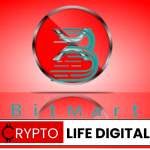What To Know About Blockchain Interoperability

Blockchain interoperability is vastly spreading in terms of usage, and popularity in the blockchain networks and it is really solving many problems of the inability of networks to connect together.
The emergence of interoperability came to play when more blockchains kept on evolving and it was difficult for the different blockchains to interact with each other.
For instance, let us consider the two entities of PC and Mac when you are using one of them you can’t switch to the other one to continue your work. So interoperability surface to solve this kind of problem.
What Is Blockchain Interoperability?
Blockchain interoperability is the ability of blockchains to communicate with other blockchains. The basis of blockchain interoperability is the cross-chain messaging protocols, which allow blockchains to read or write data to other blockchain networks.
Blockchain Interoperability allows widespread communication, the exchange of digital assets, and data, and improved collaboration between different blockchain networks.
For instance, if you have a Yahoo mail account, the interoperability allows you to send an email to someone else having a Gmail account.
Blockchain Interoperability also means that you could transact or send messages to an outside chain maybe from layer-3 to layer 2.
Also, individual networks like Polkadot, Solana, Ethereum, etc operating alone is good but it is much better when they can relate to each other efficiently.
This gives room for a wide range covering of blockchain and that is where interoperability comes to play.
Advantages of Blockchain Interoperability
- It connects different blockchain industries to work together:
The specific use cases of industry in blockchain vary. The benefits of interoperability bring about making blockchains from different organizations and industry to interact with each other thereby making independent markets and business applications that function as a single entity to now work harmoniously.
By so doing, they will be able to transfer data and value to each other. This will definitely help the various industry to leverage on one another and more innovations will be birthed for the betterment of each blockchain and the business industry in general.
- Blockchain interoperability also allows multi-token transactions and their various multi-wallet systems, which will greatly streamline the blockchain user experience.
Headways Brought By Blockchain Interoperability
The following plays an important role to achieve the interoperability in blockchain network;
- Certificate creation: This allows you to have data that has been verified and all other networks have also recognized it.
- Para-chains: These involve the usage of validators to work. As it allows the operation of multiple chains in parallel arrangements within the base layer of the blockchain.
Basically, they function to authenticate information and ensure it is correct. The limitation of para-chain is that it only operates within internal apps.
- Sidechains: this makes use of internal blockchain mechanisms to foster communication with the other network.
It has the ability to create its own certificate which increases scalability across a chain and it also allows room for interoperability.
- Bridging: This network serves as a link between blockchains by allowing the transference of data across a digital bridge.
The Game Changers In Blockchain Interoperability
1. Cardano
By adding a side chain to Cardano, opportunities are created for developers using solidity language on Ethereum. For example, developers can easily build DApps on Cardano using Ethereum Virtual Machine (EVM).
Cardano is very much important in that it allows the development of smart contract apps, and it makes use of certification to exchange information between chains.
Its ability to enable cross-chain messages makes it easier to confirm transactions, especially using proof of stake (PoS) consensus algorithms as networks.
However, it requires further technological improvement for perfection, that is, for transactions to be done across all chains.
2. Polkadot
Polkadot is the leading Blockchain Interoperability network and it is the world’s largest multi-chain ecosystem to explore the future of Web3.
They adopted a para chain in the ecosystem for them to function well. This system enables the internal applications to relate effectively with each other.
Having said that, polkadot incorporates internal validators to confirm transactions. Polkadot enables cross-blockchain transfers of any type of data asset not just tokens.
The native token is DOT which is designed to allow transactions with each other and not with the help of any
third party.
It makes use of a “relay chain” which functions as the governance layer of the network while “para chains” allows the operation of its own blockchain.
3. Chainlink
Chainlink is a multi-functional interface that supports sending of information that is secure from an off-chain network to an on-chain network.
The cross-chain network bridges the gap by using (CCIP) i.e. Cross Chain Interoperability Protocol.
This Cross Chain Interoperability Protocol uses chainlink messaging Routers to validate smart contracts before sending them to the final recipient. Unlike Polkadot which uses internal validators.
4. Plasma bridge
Plasma bridge is more advanced in functionality, it is built on the Ethereum network and it is layer 2
solution.
Unlike Cardano which makes use of proof of stake, plasma bridge utilizes proof of concept. Different transfer of information across different blockchain is made possible using atomic swaps.
5. Oracles
Oracles also bridge the gap in information between on-chain and off-chain environments. The decentralized oracle services e.g. chainlink feeds off-chain data to blockchain-enabled contracts and contributes immensely to interoperability.
It enables various ecosystems to have access to a common source of truth.
In conclusion
To further develop blockchain networks, interoperability should be embraced by all and sundry in the blockchain sectors.
Follow us on Twitter, Facebook, Telegram, and Google News

Meet Daniel Abang: Crypto guru, content creator, and analyst. With a deep understanding of blockchain, he simplifies complex concepts, guiding audiences through the ever-changing crypto landscape. Trusted for his insightful analysis, Daniel is the go-to source for staying informed and empowered in the world of cryptocurrency.




